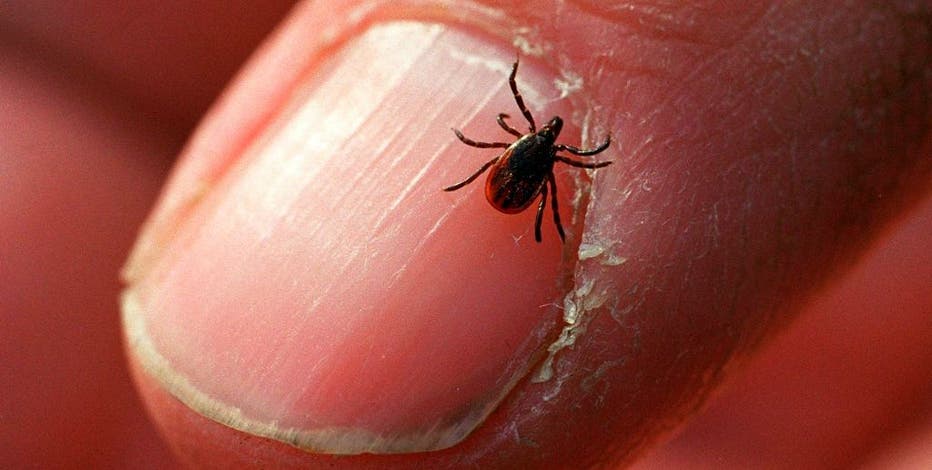
Oakdale, N.Y.: An adult deer tick at Connetquot State Park in Oakdale, New York on December 27, 2011. (Photo by Bill Davis/Newsday RM via Getty Images)
DETROIT (FOX 2) - If you're like many Americans, your Fourth of July plans probably include spending some time outside. But that time spent outdoors increases your risk of getting bitten by a tick.
The risk is especially high in grassy, woody areas.
Avoiding ticks is important because they can transmit Lyme disease to both humans and pets.
How is Lyme disease spread?
Blacklegged ticks, also known as deer ticks, can spread Lyme disease in their nymph and adult stages. Adults are found in the spring and fall, while nymphs are active in the summer.
Usually, a tick needs to be attached to a person or animal for about 36-48 hours for the bacterium, Borrelia Burgdorfer, to spread.
According to the Michigan Department of Health and Human Services, these ticks are found in both the Upper and Lower Peninsula in wooded and grassy areas.
These ticks are usually about 1/8 of an inch long, have black legs, and a round black shield behind its head.
What are the symptoms of Lyme disease?
The symptoms of Lyme disease typically show up 3-30 days after the bite, though the average is seven days.
Early symptoms in humans include a rash, fever and chills, headaches, and muscle or joint pain.
The rash, known as Erythema migrants, appears in about 70-80% of Lyme disease cases. The rash may be warm but usually does not itch or hurt, according to the CDC. It can expand with time, sometimes reaching up to 12 inches or more across.
This rash often looks like a bulls-eye but can also appear differently. According to MDHSS, the rash could also be solid red, multiple red oval-shaped spots, or a reddish-blue mark with an expanding and clearing ring.
If you think you have Lyme disease, go see a doctor because it is easier to treat early.
Untreated Lyme disease can present more symptoms as time passes. This includes severe headaches and neck pain or stiffness, facial drooping, rashes on other parts of the body, arthritis (especially in the knees), heart palpitations, muscle pain, dizziness, shortness of breath, nerve pain, tingling or numbness in hands or feet, and brain or spinal cord inflammation.
According to Cornell University, Lyme disease in dogs can cause lameness, swollen lymph nodes, joint swelling, fatigue, and loss of appetite. However, not all dogs show symptoms.
Dogs can also experience serious kidney problems if they have the disease.
How is Lyme disease treated?
Lyme disease is treated with antibiotics.
When caught early, oral antibiotics are used, typically for 2-4 weeks. If caught later or the disease involved your central nervous system, intravenous antibiotics are used for 2-4 weeks.
Symptoms of IV-treated Lyme disease may last for some time beyond treatment.
Like humans, dogs are also treated with antibiotics.
Avoiding ticks
If you are outside, especially in a wooded area, you have a chance of getting bitten by ticks. Lessen that chance by wearing bug spray with DEET and treating your clothes or gear with 0.5% permethrin.
Also, wear long clothes. Some research has suggested that dark-colored clothing attracts fewer ticks. However, ticks are easier to spot on light-colored clothes.
When you get inside, check yourself for ticks, and take a shower.
Places to check for ticks:
- Under the arms
- In and around the ears
- Inside belly button
- Back of the knees
- In and around the hair
- Between the legs
- Around the waist
Be sure your dog is on flea and tick medication. Also, be sure you check your pet before they come inside to make sure they are not carrying any ticks.
Identifying ticks
Submit a photo of a tick to the Michigan Department of Health and Human Services for identification. Click here for the email.
Tick identification is also available by mail. Learn more here.
Watch FOX 2 News Live
This browser does not support the Video element.
